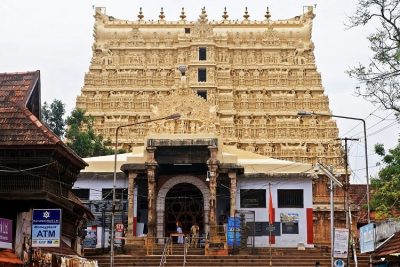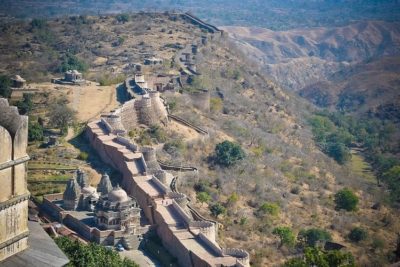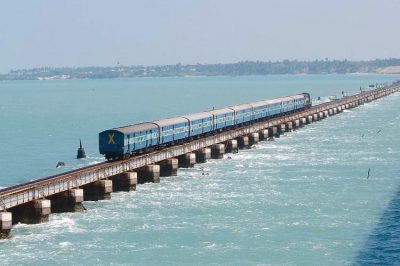India’s Jharia Coalfield, a 100 Years of Simmering Greed
Share

Open-cast mining in Jharia coalfield. (International Accountability Project / Flickr)
Earth began her celestial journey as a ball of fire. She still carries fire in her belly is aptly proved by volcanic eruption world over. What if this fire erupts in erratic, low to high-intensity outbursts of smoke and flame in a particular area? This is a daily sight in the coalfields of Jharia, 7 KMs from Dhanbad district in the state of Jharkhand; peril to inhabitants of the 450 Sq. km area can well be imagined.
The problem is over a hundred years old. Illegal mining, corruption in public life, and world treaty on global warming for minimising thermal energy (produced by burning coal) to check carbon emissions in the environment have made it all the more vexing for the Indian state.
Mining disaster at Jharia Coalfield
Mining was started in this area by the British in 1890. Subsequently, private players forayed into this business. Greed for profiteering made mine owners lax to safety measures and that in course of time made Jharia a burning field emitting greenhouse gases like carbon monoxide, sulphur dioxide and arsenic, polluting air, water and soils to no end.
Large underground mines were passé’ and the premium coke coal (Unique Selling Point of these mines) was increasingly dugout through a quicker and more cost-effective technique of surface blasts open-cast mining.
New shafts dug for quick reach to coal, connected the large underground mined spaces of past era to the air above the ground. This set in motion the spontaneous combustion of coal leading to a trail of infernos playing havoc with on ground flora and fauna, a phenomenon first noted in 1916 and continuing till date.
Fires are not only causing loss of coking coal by way of burning it but also by denying access to untapped reserves of good coal (an estimated total loss of about $ 220 billion). Cardinal railway link to Andra-Gomoh runs through this terrain and its snapping, if deemed inevitable in future, would be huge commercial set back to the state.
Notably, Dhanbad-Patherdih rail line was shut down following land subsidence in 2007, and Adra (West Bengal) Gomoh track was altered to a different route for safety reasons.

Children at work in the dangerous coal field of Jharia. (David Alexander Elder / Flickr)
Efforts from government
Nationalisation of mines in early nineteen seventies aught to have improved situation but didn’t. Large-scale opencast mining brought outside air directly in touch with residual coal inside which acquired a coating of inflammable minerals, causing auto combustion and chain of fire and smoke blitzkrieg.
Loss of life and property mounted by the day, and a need was felt to shift affected population to safer locations; 7 lakh people have already been shifted. The Government of India roped in services of DMT group of Germany to contain the fire but the group complained of poor cooperation from government officials and the task remained largely in limbo.
Coal meets 2/3rd of India’s energy needs, and most of it comes from Jharia coalfield. Unable to tap her own resources, India is forced to import coke coal from outside. Even as China and America are the biggest environmental polluters, global warming protocols mandate India to cut coal consumption to reduce carbon emission.
India must spend a whopping 400 crores per year to buy coke coal from outside to sustain her steel and iron industry. Amount of premium coke that gets burnt to ashes in fires, and the amount that remains undug because of perilous land conditions, is huge. If this is saved somehow, it can be a great boon for the Indian economy. But the situation on the ground is dismal.
Jharia Rehabilitation and Development Authority (JDRA) is engaged in the onerous task of shifting people from singing fields and give them safe base at a distance. Central Institute of Mining and Fuel Research has come up with ways to douse raging fires using nitrogen foam. Smoking ravines and billowing flames though tell a different story. Notwithstanding damage control measures, Jharia seems to be heading to ruin.
JCF (Jharia Coal Fields) may become safe for mining, environment and human habitation, but only if a century-old abuse of nature and natural resources is accounted for. This though is easier said than done.
More photos by Jhonny Haglund.
Enjoyed this article? Also, check out “Ever Heard About the Darvaza Gas Crater That has Been Burning in Flames for the Last 50 years?“.
Optional Visit:
Jharia | Jharkhand, India
Fact Analysis:
STSTW Media strives to deliver accurate information through careful research. However, things can go wrong. If you find the above article inaccurate or biased, please let us know at [email protected]













